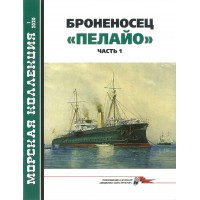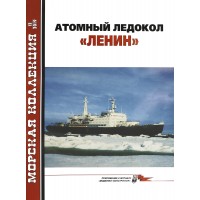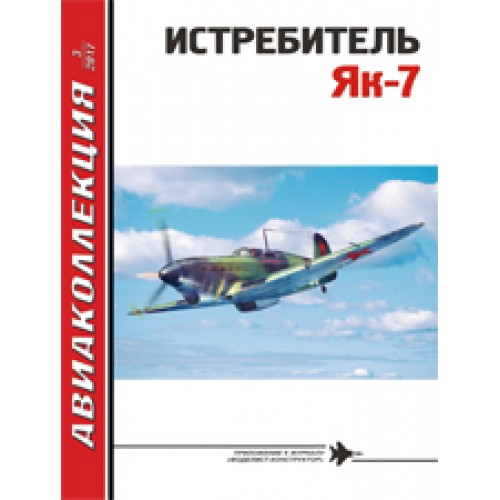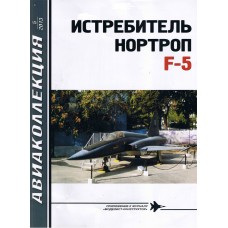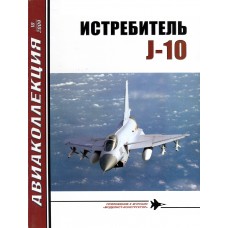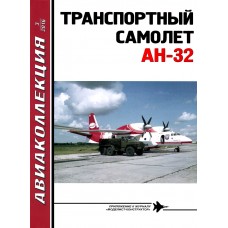AKL-201703 AviaCollection / AviaKollektsia series 03/2017: Yakovlev Yak-7 Soviet WW2 Fighter. Photos, schemes, colour pictures. 32 pages, soft cover, text in Russian.
CREATING A PLANE
Fighter I-26 designed by A.S. Yakovlev (the future Yak-1) was still undergoing factory tests, and on March 5, 1940, an order of the NKAP was signed to create its training version. It should be noted that for training pilots to fly on the I-200 and I-301, their training two-seat options were absent. The I-26 became an exception at this stage. This could have happened because OKB-115, led by A.S. Yakovlev, had by that time the greatest experience in creating high-speed training machines.
The need for such aircraft was enormous, since at that time the training of future air fighters took place on the UTI-4 (two-seat version of the I-16). But the increased speeds, including landing, and the differences in the new fighters in piloting technique required a different training aircraft.
The assignment ordered to present a two-seat fighter for state tests in two copies: the first - by August 1, the second - by August 15, 1940. It was supposed to develop a speed of 580 km / h at an altitude of 5000 m with a landing speed of 140 km / h, high-speed flight range was set equal to 600 km, and in the reloading version - 1000 km. A ceiling of 10,000 m was required and a climb time of 5,000 m was 7 minutes. The armament consisted of one 20-mm motor-gun and two 7.62-mm machine guns for forward firing and one 7.62-mm machine gun for backward firing.
Assessing these requirements, the conclusion suggests itself that they actually wanted to get a multi-purpose aircraft. Subsequently, he received the designation DI-26, but it remained on paper. The design bureau went its own way, offering the customer a full-fledged combat training fighter with lightweight weapons.
Its prototype, a vehicle designated UTI-26, was manufactured by June 17, 1940 and began flight tests the following month. The stage of factory tests was completed quickly and on August 28, specialists from the Air Force Research Institute got down to business. It took only three weeks for state tests, and a satisfactory assessment of their results opened the way to a serial plant, however, with the proviso that the identified deficiencies must be eliminated, which was done on the second copy, UTI-26-ll.
The changes affected, first of all, the main landing gear, on which the wheels had to be installed at an angle to the direction of flight with all the ensuing consequences. Improved horizontal tail, increasing the area of the stabilizer and the same reduction in the surface of the elevator. There were other, less significant changes that made it easier to operate the aircraft.
Serial production of the UTI-26 under the designation Yak-7 (Yak-7UTI) began in March 1941 at Plant No. 301, where 186 vehicles were manufactured.
Before the beginning of the Great Patriotic War, they did not get into combat units and training regiments. Therefore, on the Yak-1, MiG-3 and LaGG-3, the pilots had to transfer mainly to the SI-16 - fortunately, the new fighters were less strict in the air and obedient to air fighters.
Further development of the UTI-26 proceeded in parallel along the path of creating a full-fledged fighter and a training (export) Yak-7V aircraft, devoid of weapons and designed to consolidate the skills of piloting a combat vehicle.
In archival documents (especially in correspondence between factories and the People's Commissariat), there are various designations for the Yak-7 family aircraft, including the Yak-3. Therefore, in order to avoid confusion, in this work, all designations of modifications are given in accordance with official documents.
TRAINING AIRCRAFT YAK-7V
The Yak-7V was intended exclusively for flight schools and reserve aviation regiments. Its main difference from its predecessor was the non-retractable chassis, the main struts of which were fixed vertically, and the wheels were placed without turning.
At the same time, the domes for the wheels in the wing were "sewn up" and two hatches were made for inspecting the attachment points of the wing to the fuselage. The duralumin fork of the crutch wheel was replaced with a welded steel one, and the wheel itself was placed in a larger size (300x125 mm), making it also non-retractable. The mooring unit and oxygen equipment were removed, the number of instruments was minimized, leaving only those controlling the operation of the engine and flight navigation, necessary for flying in simple weather conditions. The armament and armored back were dismantled, and the metal-sealed fuel tanks were replaced with fiber ones. The controllable aileron and rudder trims were replaced with flytners.
In the second cabin, where the instructor was sitting, the handrails were fixed, and the pedals were lowered by 35 mm.
The cockpit canopy corresponded to the Yak-7 release of 1941. The landing headlight and aeronautical lights were removed.
In this form, the Yak-7V was launched into mass production, of course, with the wishes to eliminate the identified defects.
There were also other changes that made the aircraft cheaper and easier to operate. As a result, the plane, in comparison with the Yak-7, lightened by 75 kg, but significantly lost in speed. However, this practically did not affect the level of training of future pilots, since aerobatic qualities changed slightly.
The aircraft was allowed to fly with one pilot, both in the front and rear cockpits. It could be operated both on a wheeled and on a ski chassis, allowing the execution of all figures not only complex, but also aerobatics inherent in a combat vehicle.
In this form, the Yak-7V was launched into mass production, of course, with the wishes to eliminate the identified defects.
AKL-201703 AviaCollection 2017/3 Yakovlev Yak-7 Soviet WW2 Fighter
- Brand: AviaCollection / AviaKollektsia
- Product Code: AKL-201703 In Stock
-
$3.90
Available Options
Look at these products too:
AKL-201603 AviaKollektsia 3 2016: Antonov An-32 Cline Twin-Engined Turboprop Military Transport Aircraft
Photos, schemes, colour pictures. 32 pages, soft cover, text in Russian.Contents:The creationMass pr..
$3.90
Tags: aviation




